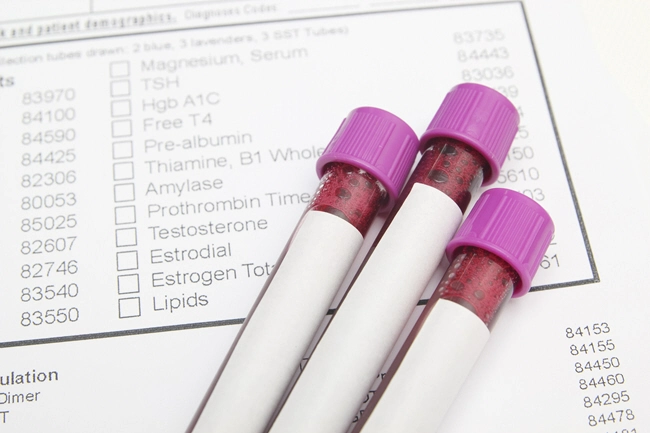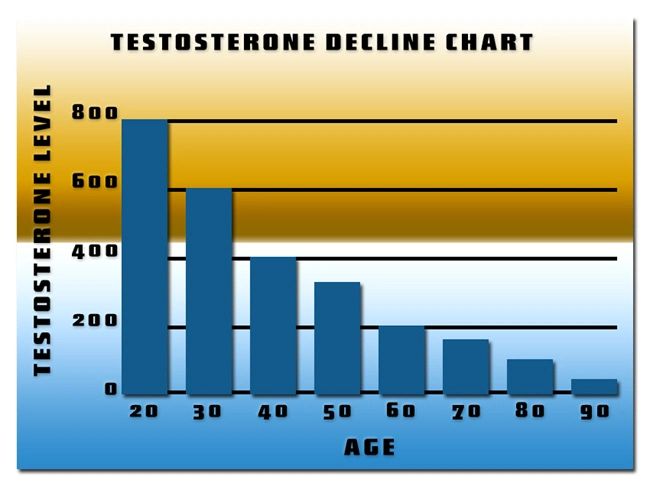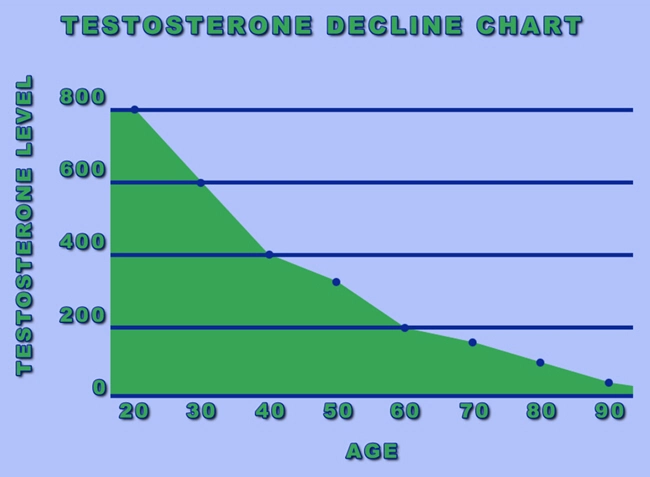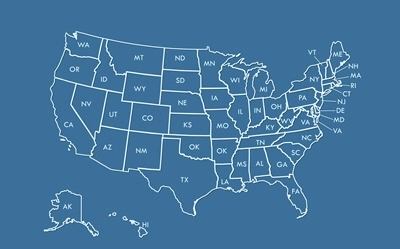
Video Link: https://vimeo.com/286237616
Video Download: Click Here To Download Video
Video Stream: Click Here To Stream Video
There are several hormone replacement therapies that our clinics provide: Human Growth Hormone (HGH) Replacement Therapy; Testosterone Replacement Therapy (TRT), and Sermorelin Replacement Therapy. Research has continually proven time and time again that these powerful treatments work.
However, there are many things you can do besides undergoing a hormone replacement regimen to make the treatments more effective...or less. One of the best ways to undermine any hormone therapy is to consume vast amounts of sugar.
You've read the statistics...the studies...the personal stories...and you have arrived at a logical conclusion...
SUGAR KILLS!
Twelve pounds of sugar per year is what the average American consumed around 100 years ago. Fast forward to today. In 2009, the average American  consumed an astonishing 150 pounds per year!
consumed an astonishing 150 pounds per year!
When you consider that the human body requires only about two teaspoons of sugar in the blood stream at any one time, it's not really too much of a stretch to realize that our current rates of obesity, diabetes, behavioral problems, mood swings, tooth decay, weakened immune systems, high acidic levels, impaired digestion, and countless other afflictions are directly tied into this massive, all-pervasive addiction to the sweet stuff.
In fact, some have noticed a link between smoking and sugar. It has been 50 years since the U.S. Surgeon General issued its first report describing in vivid detail the horrendous damage smoking was capable of inflicting on our bodies.
Since then, the number of smokers in America has been cut in half. This is excellent news, but many people are still dying from this self-inflicted, debilitating habit, and there is no doubt that the massive publicity campaign against smoking has paid off. But there is still work to be done.
It is estimated that up to 18 million Americans will die by 2050...all because of smoking.
What does this have to do with sugar? More than you would think. The story of sugar is similar, and the depressing reality is that sugar could be even worse.
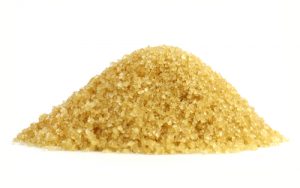 Like smoking, sugar has succeeded due to brilliant marketing. Our children have been targeted by the giant food companies (Big Agra), just like the tobacco companies used to target children with Fred Flintstone.
Like smoking, sugar has succeeded due to brilliant marketing. Our children have been targeted by the giant food companies (Big Agra), just like the tobacco companies used to target children with Fred Flintstone.
And don't forget Ronald McDonald.
Remember, even when most people smoked, there was evidence of its devastating health effects. The Surgeon General's report was the first shot in a campaign that is still going on today.
So, once again, what does this have to do with the dangers of sugar? In a word, everything. The dangers of sugar may very well turn out to be as harmful as cigarette smoking. There is no warning about the hazards to your health on sugar-laden products.
The government has not moved on Big Agra like it did in the tobacco industry. So you are on your own. It's up to you to study the facts and protect yourself and your friends and family by treating sugar as the menace that it is.
And You've Decided to Kick the Sugar Habit
Congratulations! Dramatically reducing or even eliminating sugar consumption is a gigantic step in the right direction on the road to good health.
When most people arrive at the awareness of sugar's harmful effects, they resolve to stop adding sugar to cereal or drinks, avoid processed carbohydrates and high glycemic foods, eat more natural, whole foods, and cease to be fooled by fat-free labels. So far, so good.
But Hidden Sugars Can Derail the Plan
Committing to reducing your sugar consumption is only the first step.
The actions mentioned above are the second phase.
But in addition to these 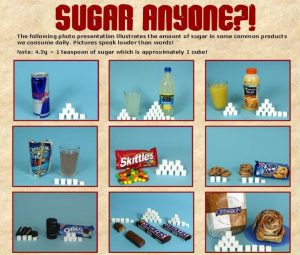 steps, you need to become an armchair chemist, and learn the other names for sugar: cane juice, caramel, corn syrup, dextrose, fruit juice (and concentrate), glucose, high fructose corn syrup, invert sugar, lactose, malt syrup, maltodextrin, maltose, mannitol, molasses, raw sugar, refiner's syrup, sorbitol, sorghum syrup, sucrose, and yellow sugar.
steps, you need to become an armchair chemist, and learn the other names for sugar: cane juice, caramel, corn syrup, dextrose, fruit juice (and concentrate), glucose, high fructose corn syrup, invert sugar, lactose, malt syrup, maltodextrin, maltose, mannitol, molasses, raw sugar, refiner's syrup, sorbitol, sorghum syrup, sucrose, and yellow sugar.
This list is extensive and impressive, to say the least. To make things easier, let's take a look at some real-life, food-on-the-shelf examples of the insidious nature of hidden sugars:
- Pasta sauce. It's true that pasta sauces contain the nutritional equivalent of many servings of vegetables, and the lycopene in the tomato-based sauce is especially important to men for prostate protection. But pasta sauce is also loaded with sugar. To be precise, most sauces contain between six and twelve grams of sugar per serving...and most people have more than the recommended serving. This is like eating two giant chocolate chip cookies. To prevent this, read pasta labels diligently, or even consider making the sauce yourself.
- Granola bars. These are marketed as healthy snacks. Regrettably, most granola bars are anything but healthy. Many of them are loaded with sugars and other ingredients that are designed to make you crave more of them. Worse, many of them are encased in chocolate or sugar-laden yogurt. Granola is excellent, so please don't “throw out the baby with the bathwater.” Just buy loose granola, which is found in cereal boxes, and eat it directly. This will reduce your sugar consumption significantly.
- Yogurt. Yogurt, like granola bars, is promoted as a health food, and it is an excellent source of protein and calcium. The problem? It is all-too-
 often sweetened to make it more appetizing to the average consumer, who will buy more of it, thinking that they are eating correctly. They are conveniently ignoring the fact that an eight-ounce cup of low-fat yogurt may contain more than thirty grams of sugar...a full 1/3rd of a woman's daily requirement. This is equivalent to devouring eight ounces of ice cream! The takeaway here is to read labels and look for low-sugar or naturally flavored yogurt. Another plan is to buy plain yogurt and add sweeteners like fruit and cinnamon.
often sweetened to make it more appetizing to the average consumer, who will buy more of it, thinking that they are eating correctly. They are conveniently ignoring the fact that an eight-ounce cup of low-fat yogurt may contain more than thirty grams of sugar...a full 1/3rd of a woman's daily requirement. This is equivalent to devouring eight ounces of ice cream! The takeaway here is to read labels and look for low-sugar or naturally flavored yogurt. Another plan is to buy plain yogurt and add sweeteners like fruit and cinnamon.
- Packaged oatmeal. This draws a lot of people in since everyone knows that oatmeal lowers cholesterol. And that's true...oatmeal does indeed lower cholesterol and delivers many other health benefits. But that stuff in the convenient package may contain as much as fifteen grams of sugar in one small bag...and most people don't eat just one. Again, the solution is simple. Buy plain oatmeal, take an extra few minutes to cook it, then add sweeteners like fresh fruit and cinnamon. Problem solved!
- Salad dressing. Here is another wolf in sheep's clothing. For many people, salad dressing is the last thing they would associate with sugar. But read the labels. Some dressings contain seven grams of sugar in just two ounces of dressing. A good rule of thumb is to look at salad dressing as an opportunity to add healthy fats to your meal. Olive oil and red wine vinegar are highly recommended.
- Breakfast cereal. Breakfast cereals are close to being “public enemy number one” in delivering hidden sugar. Here's why: most of us are well aware that so-called “kids cereals” are loaded with sugar. The problem here is that many of the cereals that are labeled “heart-friendly,” or packed with bran to promote regularity or many other health benefits, are also loaded with hidden sugar. Many brans, corn, and oat cereals have ten, twenty, or even more grams of sugar per cup. The solution? Read labels, and look for fortified cereals that are full of fiber and complex carbs without sugar.
- Energy drinks and sports drinks. Another trap for the unsuspecting. Energy drinks are promoted to crank up your energy levels before work, or especially before a workout. Sports drinks, on the other hand, are encouraged to replenish your body with electrolytes after a grueling workout. The problem? Like everything else mentioned so far, they are not what they appear to be. Energy drinks are loaded with sugar, as much as 25 grams in a small can. Many sports drinks contain high fructose corn syrup, so enough about them. For the most part, proper nutrition, a long with B-complex and Vitamin C supplements combined with water get the job done.
- Packaged fruits. The list of foods that contain hidden sugar just keeps on growing. Canned fruit is loaded with excess sugar. The so-called light
 syrup isn't so light after all, and this alone dramatically raises the sugar content of canned fruit. If you must eat canned fruit, at least drain the syrup, which will cut the sugar content by more than half. But a better plan is to shun canned fruit altogether. Just buy your fruits fresh from the store, and enjoy them before they go bad. Or if not fresh, frozen fruits are an acceptable alternative. Frozen fruits are frozen immediately after harvest, which preserves their high nutritional value. In fact, they may at times be even more nutritionally dense than their fresh counterparts.
syrup isn't so light after all, and this alone dramatically raises the sugar content of canned fruit. If you must eat canned fruit, at least drain the syrup, which will cut the sugar content by more than half. But a better plan is to shun canned fruit altogether. Just buy your fruits fresh from the store, and enjoy them before they go bad. Or if not fresh, frozen fruits are an acceptable alternative. Frozen fruits are frozen immediately after harvest, which preserves their high nutritional value. In fact, they may at times be even more nutritionally dense than their fresh counterparts.
- Cole Slaw. It seems like healthy food, right? But for the most part, the coleslaw you are served in a restaurant is usually packed with sugar, as well as fat. Usually, coleslaw contains around fifteen grams of sugar. The solution for you slaw lovers is to make slaw yourself. That way, you can make sure that the sugar content in your personally made batch won't send you into diabetic shock.
- Teas. Most of us don't chug down gallons of fruit juice as we did a few decades ago. The word is out on how much sugar is loaded into fruit juices, so many health-conscious people have switched to specialty teas. But here again, like a recurring nightmare, this may be jumping from the frying pan into the fire. Why? Because many specialty teas have even more sugar in them than fruit juice. For example, sweetened tea with lemon can contain more than thirty grams of sugar in just one 16 ounce bottle, which is more than most fruit juices. Teas are great, but go for unsweetened tea or at least lightly sweetened tea. Better still, make your own, which allows you to control the content. Consider sweetening your tea with Stevia, which is a natural no-calorie sweetener and a much healthier alternative than artificial sweeteners.
- Dried fruit. This has a unique allure for hikers and campers, and why not? It comes in a convenient package, is lightweight, and is easy to take along. But once again, hidden sugars have raised their ugly heads. The dehydration process means that there is more sugar per ounce in the product. For example, half an ounce of raisins contains ten more grams of sugar than eight ounces of grapes. Choose wisely.
- Ketchup. One of America's favorite condiments contains four grams of sugar in a single tablespoon. Limit ketchup consumption, and consider
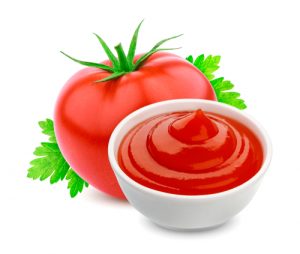 switching to other condiments such as mustard, which includes far less sugar than ketchup.
switching to other condiments such as mustard, which includes far less sugar than ketchup.
As you can see, protecting yourself from the health dangers of hidden sugars is indeed a full-time endeavor.
But it is possible.
Stay vigilant, read labels, and try to make as many changes as possible to both maintain good health and not sacrifice the tastes and flavors that make eating such a delight.
Remember, to obtain the maximum benefits from hormone replacement minimize your sugar intake.
Contact us for a FREE, no-obligation discussion about the benefits of hormone replacement therapy.
References
Sugar is Killing Us. Here's Everything You Need to Know.
Contact Us Today For A Free Consultation
Dear Patient,
Once you have completing the above contact form, for security purposes and confirmation, please confirm your information by calling us.
Please call now: 1-800-380-5339.
Welcoming You To Our Clinic, Professor Tom Henderson.

- Obese Patients Have a Higher COVID-19 Mortality Risk Than the General Public [Last Updated On: January 24th, 2025] [Originally Added On: August 21st, 2020]
- The Health and Hormone Balancing Qualities of Broccoli [Last Updated On: August 11th, 2025] [Originally Added On: August 27th, 2020]
- What to eat to boost testosterone [Last Updated On: September 14th, 2025] [Originally Added On: December 14th, 2020]
- Breaking a Weight Loss Plateau: How to Reduce Body Fat When Nothing Seems to be Working [Last Updated On: January 20th, 2025] [Originally Added On: February 16th, 2021]
- The Top 25 Most Nourishing and Sustaining Foods to Add to Your Diet Today for Increased Longevity [Last Updated On: January 16th, 2025] [Originally Added On: February 16th, 2021]
- Fight Inflammation and Osteoporosis with Beets! [Last Updated On: January 14th, 2025] [Originally Added On: February 18th, 2021]
- Break a Weight Loss Plateau with Apple Cider Vinegar [Last Updated On: January 14th, 2025] [Originally Added On: February 20th, 2021]
- An Intriguing Look into How Growth Hormone Production and Fasting are Linked [Last Updated On: January 18th, 2025] [Originally Added On: February 21st, 2021]
- Health Reasons for a Vegan Diet [Last Updated On: October 25th, 2025] [Originally Added On: April 2nd, 2021]
- Leafy Greens are Medicine for Your Gut [Last Updated On: September 27th, 2025] [Originally Added On: April 23rd, 2021]
- All Praise to the Spud -- the Delicious, Health-Giving Potato, That Is [Last Updated On: August 12th, 2025] [Originally Added On: June 1st, 2021]
- 16 Cancer-Causing Foods to Avoid [Last Updated On: May 21st, 2025] [Originally Added On: August 12th, 2021]
- Longevity and Anti-Aging -- The Use of Flax Seed Oil [Last Updated On: May 7th, 2025] [Originally Added On: August 17th, 2021]
- Essential Amino Acids Critical to Health and Hormone Balance [Last Updated On: June 13th, 2025] [Originally Added On: October 6th, 2021]
- Growth Hormone and Calcium [Last Updated On: January 11th, 2025] [Originally Added On: October 16th, 2021]
- Growth Hormone and Coffee [Last Updated On: January 9th, 2025] [Originally Added On: October 19th, 2021]
- The Importance of Protein in Weight Loss and Testosterone Production [Last Updated On: January 19th, 2025] [Originally Added On: October 19th, 2021]
- Testosterone, Growth Hormone, and Processed Meat [Last Updated On: January 8th, 2025] [Originally Added On: October 19th, 2021]
- Growth Hormone and Intermittent Fasting [Last Updated On: January 7th, 2025] [Originally Added On: October 19th, 2021]
- Growth Hormone and the Importance of Nutrition [Last Updated On: January 7th, 2025] [Originally Added On: October 20th, 2021]
- Growth Hormone Stops Inflammation! [Last Updated On: January 8th, 2025] [Originally Added On: October 20th, 2021]
- Growth Hormone and Sugar Addiction [Last Updated On: January 4th, 2025] [Originally Added On: October 20th, 2021]
- Growth Hormone and Red Meat [Last Updated On: January 5th, 2025] [Originally Added On: October 20th, 2021]
- Boost Growth Hormone with Sleep [Last Updated On: May 20th, 2025] [Originally Added On: October 20th, 2021]
- A Natural Acid Found in Apples Prevents Muscle Loss AKA Sarcopenia [Last Updated On: January 10th, 2025] [Originally Added On: October 20th, 2021]
- Growth Hormone and Organic Foods. [Last Updated On: January 3rd, 2025] [Originally Added On: October 21st, 2021]
- Growth Hormone and Acidosis [Last Updated On: January 5th, 2025] [Originally Added On: October 21st, 2021]
- Growth Hormone Food Choices [Last Updated On: January 2nd, 2025] [Originally Added On: October 21st, 2021]
- Growth Hormone and Cholesterol: the Surprising Link [Last Updated On: January 6th, 2025] [Originally Added On: October 22nd, 2021]
- Growth Hormone and Weight Loss [Last Updated On: January 3rd, 2025] [Originally Added On: October 22nd, 2021]
- Growth Hormone Reduces Inflammation [Last Updated On: January 4th, 2025] [Originally Added On: October 24th, 2021]
- What You Eat Impacts Both Your Sleep AND Your Growth Hormone Production [Last Updated On: January 10th, 2025] [Originally Added On: October 24th, 2021]
- Growth Hormone Lowers Blood Sugar [Last Updated On: January 6th, 2025] [Originally Added On: October 24th, 2021]
- Testosterone and Magnesium [Last Updated On: May 22nd, 2025] [Originally Added On: April 28th, 2022]
- The Beneficial Functions of Brown Fat vs. White Fat [Last Updated On: May 26th, 2025] [Originally Added On: May 3rd, 2022]
- MOTS-c Peptide for Weight Loss and Muscle Building [Last Updated On: June 11th, 2025] [Originally Added On: November 7th, 2022]
- Looking to lose weight? Add this ingredient to meals [Last Updated On: September 24th, 2025] [Originally Added On: December 7th, 2022]
- The many health benefits of black tea [Last Updated On: September 23rd, 2025] [Originally Added On: December 13th, 2022]
- Raw Food Benefits [Last Updated On: September 20th, 2025] [Originally Added On: January 18th, 2023]
- Brain Foods that Work Together with HGH to Improve Mental Sharpness [Last Updated On: February 14th, 2025] [Originally Added On: March 9th, 2024]
